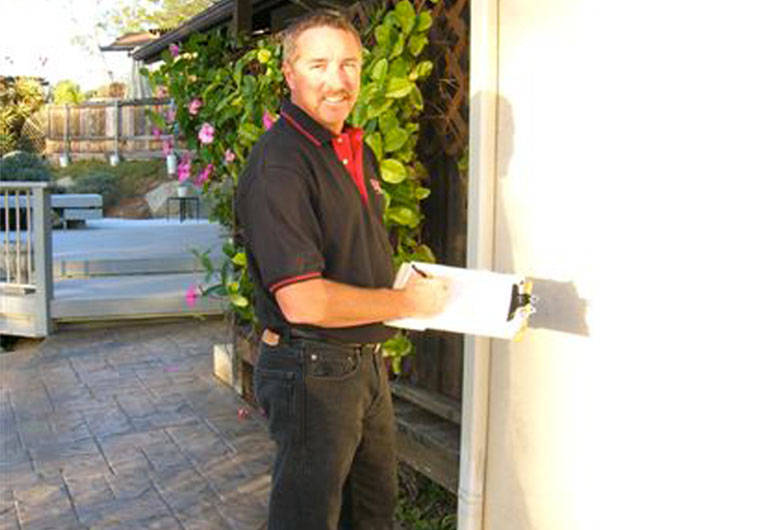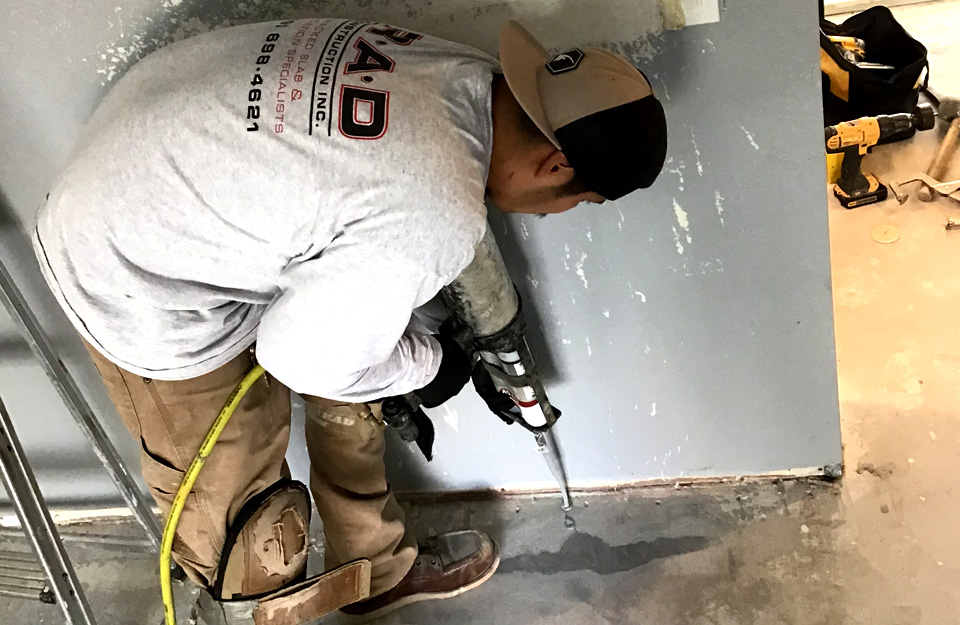Did You Know?
We have compiled a list of common questions and statements about slab and raised foundation repair.Things to Know!

R.A.D Construction's founder Russ Burdeno has compiled a list foundation repair related questions and concerns based on his over 30 years of experience in the foundation repair business.
Please contact us if you have any further questions.
Level Homes
Most homes are not perfectly level, and in most cases, this is not an indication of a big structural problem. Most homes are ¾" from level.
Homes that are out of level by
- 1" = Good performance over time.
- 1" – 2" = Mild performance and should be monitored and keep good maintenance.
- 2" – 3" = Moderate performance. Monitor closely and may need stabilization.
- 3" – 4" = Critical performance and will most likely need stabilization.
Cracks in Concrete
Not all cracks are structural problems. Some cracks may be shrinkage cracks from the concrete curing too fast. They should still be sealed with epoxy, however, they are not an indication that the slab is moving. If the crack has a vertical offset, "trip hazard", or wide enough to distort your frame and crack your walls, this is an indication of settlement or movement of the structure.
Post-tension Slabs
Post- tension slabs are reinforced with steel cable (like tendons) and then highly tensioned. They can, however, settle and crack just like a conventional concrete slab. Post tension slabs do often crack, but rarely offset or get large. They should still be examined, and sealed with epoxy, like other typical/conventional slabs.
Old Foundation Posts
It is common practice to leave an old post in place while building new ones adjacent to the old. The reason for this is that you can easily damage the framing by taking an old post apart that has been there for many years.
Water Issues
One of the quickest ways to get your house to move is to add water. Broken pipes, poor irrigation, inadequate drainage can often be the culprit. When the soil dries out, this can cause significant change in the soil, and crack your slab and/or foundation.
Underpinning
There are many types of pile systems and they are not all equal.
"Push Piers", common in San Diego, use the weight of your home to push the piles into the ground. If you have an older foundation, this can cause extensive damage. Push Piers are for vertical downward movement only. For homes built in clay soil, your home may still move around with this method... all that is needed is to just add water.
"Driven Piles", such as the method that is used by our company, are vertical steel pilings that are driven into the soil with a jackhammer. The piles are driven to refusal to add vertical support to your foundation while sparing wear and tear on your foundation. The piles are steel doweled to your foundation to act as a "hold up and hold down" for your foundation. The pile method used by R.A.D Construction Inc. is also tied together laterally with a steel reinforced grade beam to eliminate side to side movement. This is a more reliable repair method in most cases. We recommend a local registered civil engineer to provide oversight on these type of projects.
Underpin or Replace a Raised Foundation?
If you have an older home with rock and mortar stemwall foundations, pipe piles may not be the appropriate repair for stabilization of your type of home and foundation. Underpinning may do more damage than good on an older rock and mortar foundation. A replacement foundation with steel reinforced concrete, may be a more appropriate repair for your home. Please contact our staff with further questions about these methods.
Slurry Coating
It is not a good idea to slurry coat your foundation unless you have a qualified engineer recommending it. Once it is slurry coated, the "real" condition of the foundation cannot be determined and we have to assume that it needs replaced. Slurry coat can be an indication that the foundation condition is being "hidden".
Hear What Our Clients
Have to Say


